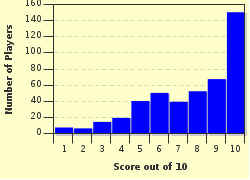Quiz Answer Key and Fun Facts
1. First of all, where is Krakow? Krakow is located in southern Poland at the foot of the Carpathian Mountains. On which river does this historic city lie?
2. Upon walking into the large open main square in the centre of Krakow, you are surrounded by several historical buildings. One of the most eye-catching features of the square is an attractive building at the centre. This has been a major market of international trade and is still home to traders of many goods. What is the name of this building?
3. Also found in the main market square of Krakow is a statue of a man often referred to as the "Polish Shakespeare". This comparison intends to show how famous and well respected this man is within Poland. To which poet is this statue dedicated?
4. Krakow is known for its educational history as well as its economic history. Jagiellonian University is perhaps the most famous of them all, with students including mathematician Sierpinski and Nobel Laureate Ivo Andric. Which of these men, one of the first to suggest that the Earth orbited the sun, was another former student of this university?
5. Another famous student at the Jagiellonian University went onto become Pope. What was this man's birth name?
6. The history of Krakow has been one of invasion and destruction at the hands of numerous armies. This is seen in the huge fortifications which were built to protect the city from such attacks. Which structure, which has also been home to many early Polish kings and is currently a museum, shows these typical fortifications?
7. Back in the main market square of Krakow, one of the largest and most visually spectacular sites is St. Mary's Basilica. A tradition in Krakow is that every hour a trumpeter would play atop the tower to the people in the main square. What is unusual about the tune which is played?
8. Opposite St. Mary's Basilica in the main market square of Krakow is another church. This church is known as The Church of St. Wojciech (St. Adelbert). Can you tell me what is special about this particular church?
9. Which area of Krakow was founded by a king of the same name, and is now known as "the old Jewish quarter" due to its previously large Jewish population?
10. Krakow's "Old Town" attracts many tourists due to its abundance of museums, churches and landmarks. What is the name given to the collection of gardens and works of art which encapsulates the "Old Town"?
Source: Author
doublemm
This quiz was reviewed by FunTrivia editor
Exit10 before going online.
Any errors found in FunTrivia content are routinely corrected through our feedback system.

